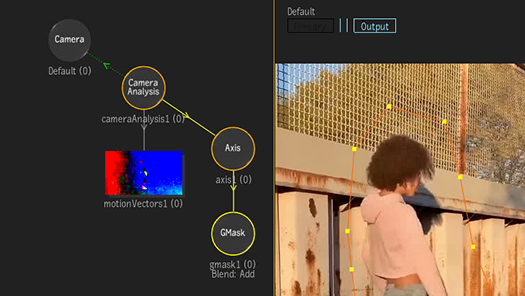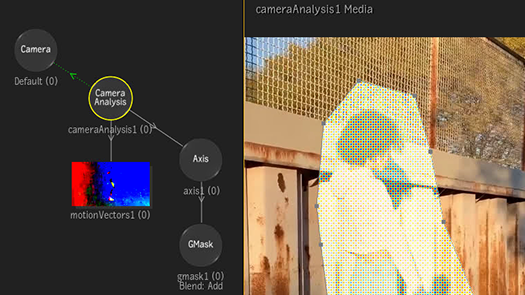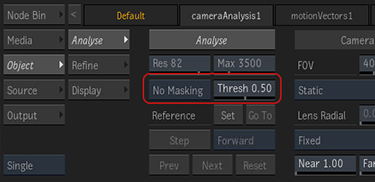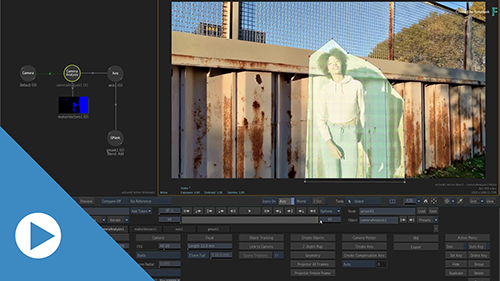Excluding with GMasks and Machine Learning
Use GMask and Machine Learning masking to exclude areas from the Camera Analysis.
Camera Analysis: Excluding with Masks and Machine Learning Tutorial—Credit: www.pexels.com | Wolfgang Langer
Camera Analysis creates a 3D track from analysing camera movement in a shot. Movement from people, animals, cars, objects or even free-flowing water can disrupt this analysis.
So before performing the analysis, augment your chances at getting a great track by removing unwanted movement. You have two tools at your disposal: GMasks and Machine Learning.
You can combine these two methods if needed. If you do combine GMask and Machine Learning masking, start by Machine Learning masking, and then refine the masking with a GMask. But be careful to leave enough of the image unmasked so the Camera Analysis has something to analyse.
Excluding with GMasks
Before doing the analysis:
Set the Viewports to the 2-Up view (Alt+2).
In the Schematic view, select the Camera Analysis node.
With the cursor in the other viewport, display the Result view (F4).
Add a Gmask node from the Action node bin.
In the Result view, draw a GMask around the object to remove.

Because the object and the camera are moving, you must also manually keyframe the GMask. Or perform a regular GMask point track.
In the end, you want the GMask to cover the object to remove. The masking doesn't have to be precise.
Verify what the GMask masks from the Camera Analysis:
In the Schematic view, select the Camera Analysis node.
With the cursor in the other viewport, press F8 until the Camera Analysis Media view appears.
The shaded area shows what will be ignored during the analysis.

After the analysis, see what Camera Analysis ignored:
- In the Schematic view, select the Camera Analysis node.
- With the cursor in the other viewport, press F8 until the Camera Analysis Camera view appears.
- See how there are no tracking points in the masked area.
Excluding with Machine Learning
Before doing the analysis:
Set the Viewports to the 2-Up view (Alt+2).
In the Schematic view, select the Camera Analysis node.
With the cursor in the other viewport, press F8 until the Camera Analysis Media view appears.
Select an option from ML Masking.
The Media viewport shades the area affected by the Machine Learning masking. This will be ignored by the Camera Analysis.

Edit Threshold to expand or contract the coverage of the mask.
Machine Learning Masking options:
- Mask Sky: The sky is rarely an issue with Camera Analysis, but too much sky can affect the results.
- Mask Humans: Especially useful with crowds.
- Mask All: Masks out the sky, people, animals, vehicles, and bodies of water.
After the analysis, see what Camera Analysis ignored:
- In the Schematic view, select the Camera Analysis node.
- With the cursor in the other viewport, press F8 until the Camera Analysis Camera view appears.
- See how there are no tracking points in the masked area.

